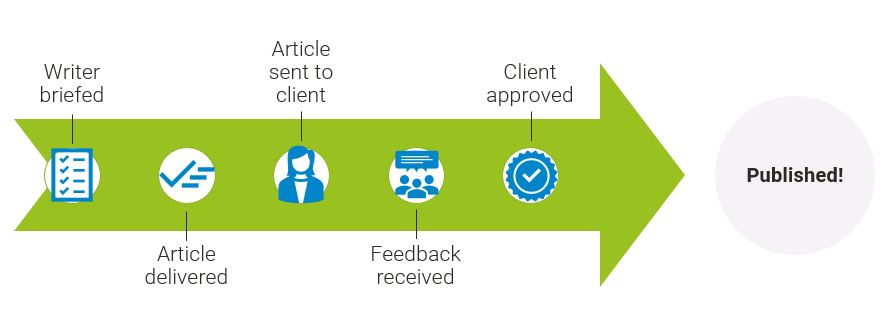
How to set up a content production pipeline without losing the plot

Building a smooth content production pipeline is no easy feat, and when you’re dealing with multiple markets and languages, things can spiral quickly. At Brighton SEO, Oban’s Content Strategist Laura McInley shared our proven approach to keeping everything on track. In this guide, we’ll break down her insights and give you practical tips for handling cross-border content production without feeling overwhelmed. Let’s get started.
1: Clarify your objectives and scope
Before you get into timelines and workflows, it’s crucial to define what you’re actually producing. It’s important to understand the specific needs of each market. Start by asking the basics:
- What type of content do we need?
- What’s the goal? Are we driving traffic, boosting conversions, or raising brand awareness?
- How many content pieces are needed, and when are they due?
For global campaigns, these questions need answers for each market. No two regions are alike – user intent, search behaviour, competition, and content preferences all differ. By ensuring clarity upfront, you’ll avoid headaches down the line.
2: Audit each market like a pro
A crucial yet often overlooked step when working across regions is conducting a thorough audit for each one. You need to know what content you already have and what can be repurposed or localised. Ask yourself:
- What’s working well in Market A, and is it relevant in Markets B, C, and D?
- Are there content gaps compared to local competitors?
- What are the unique search behaviours in each market?
This level of detail is important, especially in non-English markets. Local trends, keywords, and user intent vary hugely. A one-size-fits-all approach won’t cut it.
3: Be realistic with your timelines
Timelines are essential, but when you’re managing content for multiple regions and languages, they become even more critical. Content goes through several stages – ideation, keyword research, drafting, localisation, quality assurance, stakeholder approvals, and implementation. Each stage needs its own timeframe, especially if different languages and teams are involved.
A common pitfall is underestimating the time needed for localisation. Remember, it’s not just about translating words; it’s about adapting the message for the local culture. Allow sufficient time for this and be sure to work closely with Local In-Market Experts (LIMEs).
Also, be mindful of holidays and events in different regions. These can affect both the production process and the content itself. A well-planned global content calendar that accounts for regional differences can save you from last-minute scrambles. You can use Oban’s free Global Marketing Calendar to plan key dates across markets.
4: Establish a workflow that actually works
An efficient content pipeline relies on a structured workflow, but flexibility is crucial when working internationally. Set up a system where each task is clearly defined and assigned, with specific deadlines for every step of the process. This ensures accountability and visibility at each stage.
 However, markets are unique, and what works for one may not suit another. Adapt your workflows to allow for local flexibility. For example, while one market may require a formal approval process, others may allow quicker, decentralised sign-offs. Tailoring workflows to each region’s needs can help avoid bottlenecks and speed up production.
However, markets are unique, and what works for one may not suit another. Adapt your workflows to allow for local flexibility. For example, while one market may require a formal approval process, others may allow quicker, decentralised sign-offs. Tailoring workflows to each region’s needs can help avoid bottlenecks and speed up production.
Tools like content trackers or project management platforms can help you manage workflows across different teams and time zones. Ensure that you’re regularly reviewing your tracker to avoid bottlenecks and make room for adaptations where needed. Example tools include Asana, Trello, Wrike, Monday.com, and others.
5: Nail down approvals to avoid chaos
Stakeholder sign-off can often be a challenging part of content production, especially when you’re trying to align multiple markets. Start by identifying who needs to approve content and clarify expectations upfront. A thorough understanding of approval processes and lead times at the outset can help avoid delays or last-minute revisions.
Does each market need its own approval chain, or can central stakeholders give the green light for all markets? Clarify this early to avoid unnecessary back-and-forth later. Consider working in batches – grouping similar content pieces together for approval so that you avoid having stakeholders review multiple pieces piecemeal.
6: Use AI – but ensure human oversight
AI has transformed content production, particularly when scaling across regions. However, it’s critical to approach it with care. While AI tools can speed up processes like drafting or translation, they usually lack the cultural insight and human nuance needed for local markets.
At Oban, we use AI strategically but always ensure there’s a human layer overseeing key stages. Whether it’s refining AI-generated drafts or running thorough localisation checks, don’t skip the human touch. Remember, Google’s emphasis remains on content quality – authentic, useful content will always outperform automated outputs in the long run.
7: Scale up without sacrificing quality
As your content pipeline grows, the true test lies in scalability. Producing content at scale, especially for multiple markets, requires you to optimise processes without sacrificing quality.
- Streamline where possible – batch approvals, automate simple tasks, and delegate effectively.
- Outsource carefully – bringing in freelancers or additional LIMEs can help when workloads spike, but ensure they are well-briefed and understand the intricacies of your brand and its tone.
Be prepared to scale back if the quality starts to drop. Always prioritise quality over quantity, even if it means slowing down production temporarily.
8: Review and adapt your pipeline regularly
Content pipelines shouldn’t be static. As you scale, your processes should evolve. Regularly review your pipeline to identify bottlenecks and inefficiencies. Ask yourself:
- Are the workflows still working for all regions?
- Can you simplify the approval process further?
- Do you need to adapt the timeline to fit new markets or content types?
A good content pipeline isn’t just built once and left to run. It requires ongoing optimisation to stay efficient as your needs evolve.
. . .
Ready to scale your content across markets?
Scaling content for international markets requires more than just a good idea – it requires careful planning, local insight, and efficient workflows. At Oban, we work with our network of Local In-Market Experts to help businesses create content that resonates across borders, ensuring your message hits home wherever your audience is. Get in touch today to see how we can support your international marketing success.
Further reading:
- Oban’s guide to creating long-form content
- How to localise audience personas for different markets
- Why local reviews are the key to your business’s global growth
Oban International is the digital marketing agency specialising in international expansion.
Our LIME (Local In-Market Expert) Network provides up to date cultural input and insights from over 80 markets around the world, helping clients realise the best marketing opportunities and avoid the costliest mistakes.